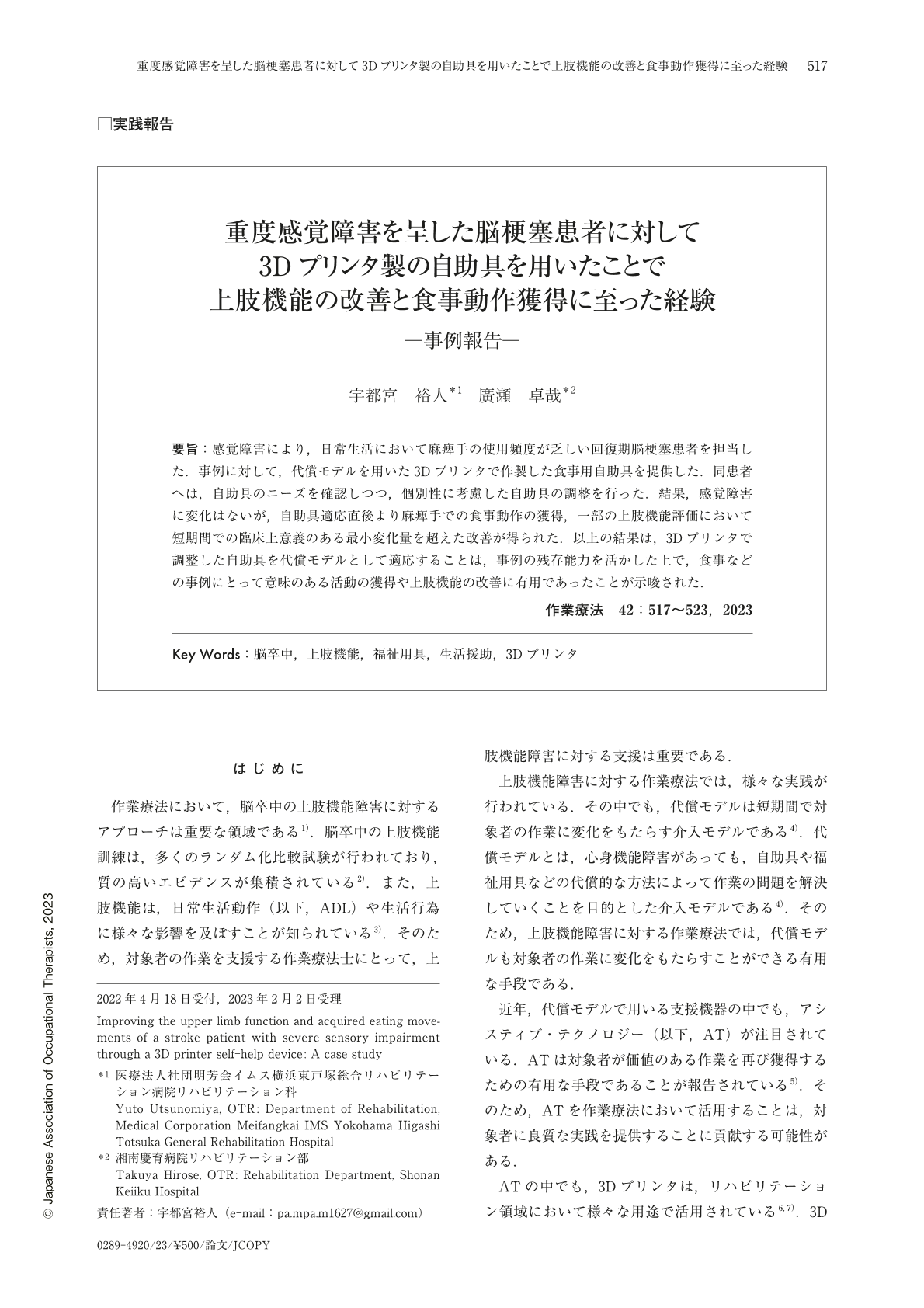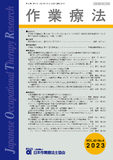Japanese
English
- 販売していません
- Abstract 文献概要
- 1ページ目 Look Inside
- 参考文献 Reference
- サイト内被引用 Cited by
要旨:感覚障害により,日常生活において麻痺手の使用頻度が乏しい回復期脳梗塞患者を担当した.事例に対して,代償モデルを用いた3Dプリンタで作製した食事用自助具を提供した.同患者へは,自助具のニーズを確認しつつ,個別性に考慮した自助具の調整を行った.結果,感覚障害に変化はないが,自助具適応直後より麻痺手での食事動作の獲得,一部の上肢機能評価において短期間での臨床上意義のある最小変化量を超えた改善が得られた.以上の結果は,3Dプリンタで調整した自助具を代償モデルとして適応することは,事例の残存能力を活かした上で,食事などの事例にとって意味のある活動の獲得や上肢機能の改善に有用であったことが示唆された.
We oversaw a patient with cerebral infarction in the convalescent period whose use of the paralyzed hand was infrequent in daily life due to sensory impairment. A compensatory model was used to provide a 3D printer-made eating utensil for the patient study. The patient's needs for a self-help device were confirmed, and the device was customized to meet the patient's individual needs. The results showed that, although there was no change in sensory impairment, the patient was able to eat with the paralyzed hand immediately after the application of the self-help device, and some upper limb functions were improved beyond the minimum clinically meaningful change in a short period of time. These results suggest that utilizing a 3D printer-adapted self-help device as a compensatory model was useful for both acquiring meaningful activities, such as eating, and improving upper limb function, while utilizing the case's remaining abilities.

Copyright © 2023, Japanese Association of Occupational Therapists. All rights reserved.


